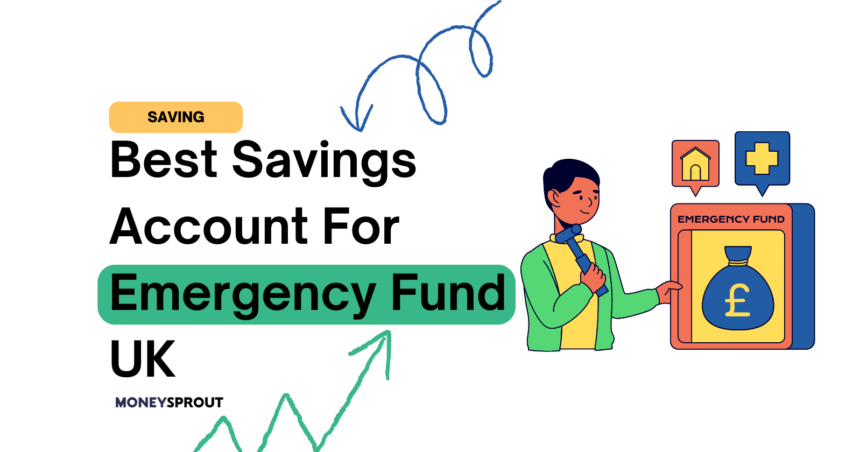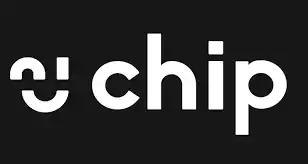Having an emergency fund is an important initial step on your way to financial freedom. It allows you to be prepared for the unknown and ensure that unforeseen events don’t put you into financial difficulty.
While you are not using this pot of money, you want to ensure it is earning as much interest as possible. We don’t want our emergency fund to be eroded by inflation, which is currently at over 7%. Therefore, getting your emergency fund into a high-interest savings account is extremely important.
We have found the best high-interest savings accounts which work well as emergency funds. Let’s take a look.
Best Accounts For Emergency Funds
Below you will see our best savings account picks for emergency funds. These are all easy-access accounts allowing you fast access to your money when you need it. They also won’t penalise you for making deposits or withdrawals throughout the year.
| Rate | Provider | Minimum Opening Balance | How To Manage The Account | Apply |
|---|---|---|---|---|
| 4.83% | Shawbrook Easy Access | £1000 | Email, Online, Phone | Apply |
| 5% | Furness BS | £1 | Online | Apply |
| 4.90% | Cahoot | £1 | Online | Apply |
| 4.90% | Beehive Easy Access | £1000 | Online, Telephone | Apply |
| 4.84% | Chip* | £1 | App | Apply |
Chip is currently the account I am personally using due to its ease of use and app interface. You can sign up within the app in minutes and connect your bank with open banking. With a modern interface, easy access, and a 4.84% interest rate, it’s the perfect place to keep my emergency fund.
Chip is an award-winning savings and investment app. They became popular with their high-interest savings account but also offer investment services and automatic saving.
What Is An Emergency Fund?
An emergency fund, quite simply, is a safety net of cash set aside to cover the financial surprises life throws your way. These unexpected events can be stressful and costly. Here are some examples: you lose your job, your car breaks down, you fall ill and can’t work, or perhaps your boiler breaks down in the middle of winter. An emergency fund is there to help you cover these types of expenses.
Why Is It Important To Have An Emergency Fund?
In essence, an emergency fund is a personal insurance policy, providing you financial security and allowing you to live without worrying about how you’ll pay for unexpected expenses. Without one, these unforeseen events can become even more stressful, leading you to accumulate debt or sacrifice your long-term financial goals.
Without an emergency fund, it’s easy to end up in a debt spiral. You take on short-term, high-interest debt to pay for an emergency and now you have to pay it back over the following months decreasing your disposable income even more.
If a second unexpected expense pops up or you lose your job in this situation things can get bad really fast. However, if you have an emergency fund, it gives you peace of mind and shields you from these problems.
Even if you have a large stock portfolio, it’s still wise to have an emergency fund. The last thing you want to do is pull from your investments. You want to let them sit and compound over time without pulling money out for emergencies which could hurt your returns.
That’s why we recommend having a solid emergency fund in a high-interest savings account even if you have a high net worth.
How Much Do I Need In An Emergency Fund
How much you need in your emergency fund depends on your own personal circumstances. It’s a common rule of thumb to have three to six months of basic living expenses. Personally, I would recommend getting to 6 months of basic living expenses.
Basic living expenses mean your essentials such as rent, utilities, groceries, transport etc. If you’re in a position where you are using your emergency fund, you should not be eating out, buying many clothes, or spending money on unnecessary purchases.
If you lose your job this gives you time to find a new one without having to stress about going into debt. The peace of mind an emergency fund provides is bliss.
Emergency Fund = Basic Living Expenses x 6 Months
How To Build And Maintain An Emergency Fund
Follow the steps below to build and maintain your emergency fund.
- Set a Target – Set a target and work towards building it up. This should be a minimum of 3 months of basic expenses but ideally 6 months. This includes rent/mortgage, transport, groceries, utilities, and any other recurring expenses you may have.
- Start Savings – Now you have a target, it’s time to start saving towards it. Open one of the high-interest savings accounts recommended above. You should contribute as much as you can to your emergency fund until it’s full. You can do this by setting aside a portion of your income each month. The simplest way is to treat it like an expense that must be paid. Once the transfer has been made to your savings account, that money is gone.
- Replenish The Fund – If you end up using a portion of your emergency fund it needs to be replenished. If you go below your target amount simply follow step 2 again and start filling up the account. This means you are always ready for any unexpected expenses.
You should be building your emergency fund before starting to make any investments. Once your emergency fund is full you can start investing. If you are currently in debt I would recommend building a 2-3 Month emergency fund to give you some breathing room, then tackle your debt before fully filling the emergency fund.
Important: It’s important to be honest with yourself about what’s an emergency and what isn’t. It should not be used for normal expenses or discretionary spending. Many people end up dipping into these funds for a holiday or new PlayStation but that is not how this should be used. If you want to be successful financially, be strict about how you use this fund.
What Type Of Savings Account Is Best For An Emergency Fund
There are many different variations of savings accounts but they don’t all fit the need of an emergency fund. The number one priority of an emergency fund is having the ability to easily access the money.
You don’t want to lock your money in a fixed-rate bond or notice account because they penalise you for taking money out. It can also take longer to access your money.
An easy-access savings account is the best place to keep your emergency fund. This account allows you to withdraw and deposit money at any time without incurring penalties or losing interest.
Rates can vary significantly from different providers on these accounts so you want to shop around regularly to see if there are better options out there. Some of the best accounts on the market right now are highlighted at the top of this page.
Final Thoughts
To wrap up, an emergency fund is a crucial part of any smart financial plan. It provides you with a financial lifeline when you need it most, protecting you from high-interest debt or eating into your investments. Keeping your emergency fund in a high-interest savings account allows you to earn returns on your money while you’re not using it.
Read More From Money Sprout:





